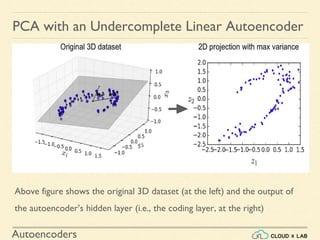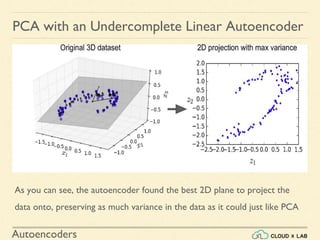An autoencoder is an artificial neural network that is trained to copy its input to its output. It consists of an encoder that compresses the input into a lower-dimensional latent-space encoding, and a decoder that reconstructs the output from this encoding. Autoencoders are useful for dimensionality reduction, feature learning, and generative modeling. When constrained by limiting the latent space or adding noise, autoencoders are forced to learn efficient representations of the input data. For example, a linear autoencoder trained with mean squared error performs principal component analysis.
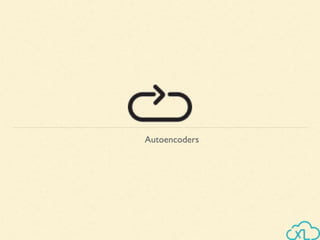
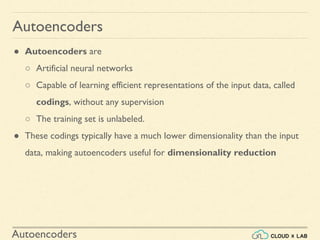
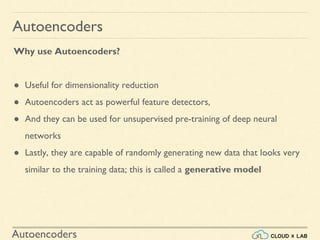
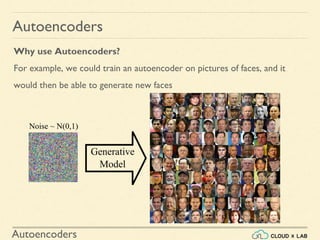
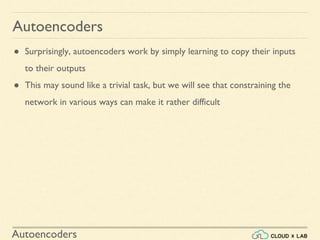
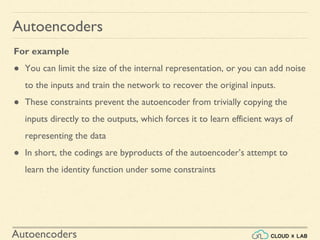
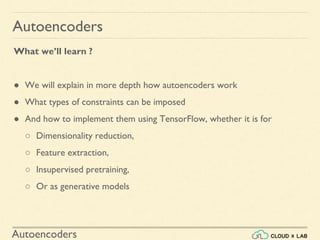
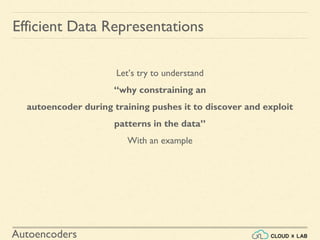
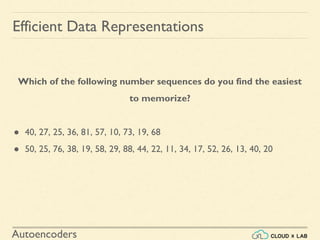










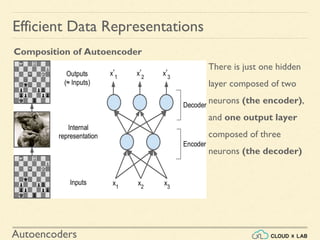
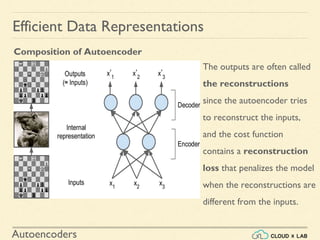
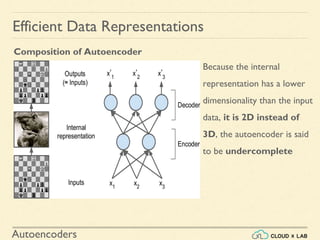
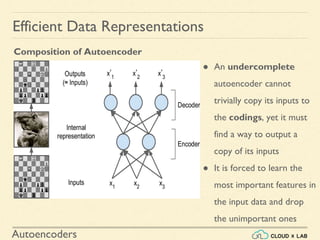
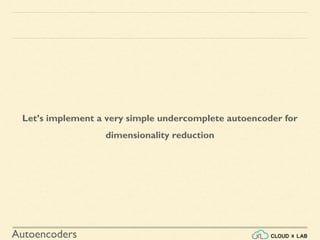

![Autoencoders
>>> import tensorflow as tf
>>> from tensorflow.contrib.layers import fully_connected
>>> n_inputs = 3 # 3D inputs
>>> n_hidden = 2 # 2D codings
>>> n_outputs = n_inputs
>>> learning_rate = 0.01
>>> X = tf.placeholder(tf.float32, shape=[None, n_inputs])
>>> hidden = fully_connected(X, n_hidden, activation_fn=None)
>>> outputs = fully_connected(hidden, n_outputs, activation_fn=None)
>>> reconstruction_loss = tf.reduce_mean(tf.square(outputs - X)) # MSE
>>> optimizer = tf.train.AdamOptimizer(learning_rate)
>>> training_op = optimizer.minimize(reconstruction_loss)
>>> init = tf.global_variables_initializer()
PCA with an Undercomplete Linear Autoencoder
Run it on Notebook](https://image.slidesharecdn.com/d7-180531085553/85/Autoencoders-26-320.jpg)
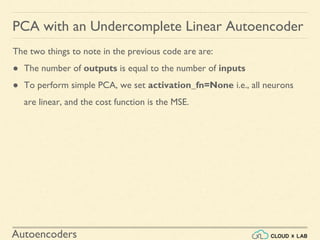
![Autoencoders
Now let’s load the dataset, train the model on the training set, and use it to
encode the test set i.e., project it to 2D
>>> X_train, X_test = [...] # load the dataset
>>> n_iterations = 1000
>>> codings = hidden # the output of the hidden layer provides the
codings
>>> with tf.Session() as sess:
init.run()
for iteration in range(n_iterations):
training_op.run(feed_dict={X: X_train}) # no labels
codings_val = codings.eval(feed_dict={X: X_test})
PCA with an Undercomplete Linear Autoencoder
Run it on Notebook](https://image.slidesharecdn.com/d7-180531085553/85/Autoencoders-28-320.jpg)
